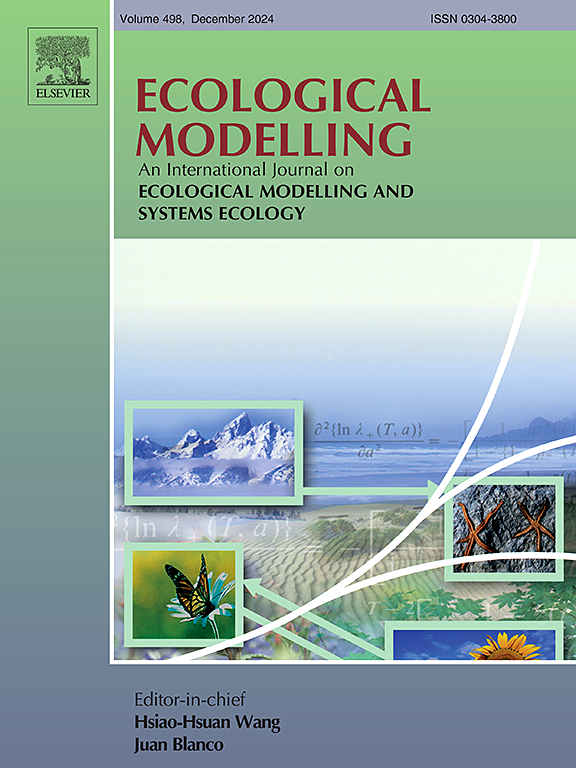Modelling past and future impacts of droughts on tree mortality and carbon storage in Norway spruce stands in Germany
IF 2.6
3区 环境科学与生态学
Q2 ECOLOGY
引用次数: 0
Abstract
Between 2018 and 2020, Central Europe experienced severe droughts. Leading to unprecedented increase in Norway spruce (Picea abies) tree mortality, which has not been reproduced in process-based forest or dynamic vegetation models (DVMs). In this study, we developed logistic regression models for drought-related Norway spruce mortality using climate and weather anomalies and mortality data from the forest monitoring plot network of the German crown condition survey. We integrated these models into the DVM LPJ-GUESS.
Under historical conditions (1998–2020), our models reproduce observed temporal and spatial mortality patterns. Future simulations (2021–2070) under the RCP2.6 and RCP8.5 climate scenarios show periodic increases in Norway spruce mortality. Even though the drought-mortality models reproduce past dynamics similarly well, they do not agree on the timing and magnitude of future drought-related mortality events. Including drought mortality in the DVM reveals substantial reductions in aboveground biomass in 2070 (e.g. -18 % in RCP2.6 and -36 % in RCP8.5 (mean across all simulations)), compared to baseline simulations without drought mortality. According to the model, drought-related reductions of potential harvest across Germany could accumulate to 310 million Mg of C (RCP2.6) and 447 million Mg of C (RCP 8.5) in the period from 2021 to 2070. Our study underscores the severe risk of large-scale future Norway spruce forest diebacks in Germany. Predictions of the magnitude and timing of such dieback events are, however, still highly uncertain. Nevertheless, such events should be considered in predictive modelling studies because they can have fundamental effects on forest carbon cycling and harvest.
求助全文
约1分钟内获得全文
求助全文
来源期刊

Ecological Modelling
环境科学-生态学
CiteScore
5.60
自引率
6.50%
发文量
259
审稿时长
69 days
期刊介绍:
The journal is concerned with the use of mathematical models and systems analysis for the description of ecological processes and for the sustainable management of resources. Human activity and well-being are dependent on and integrated with the functioning of ecosystems and the services they provide. We aim to understand these basic ecosystem functions using mathematical and conceptual modelling, systems analysis, thermodynamics, computer simulations, and ecological theory. This leads to a preference for process-based models embedded in theory with explicit causative agents as opposed to strictly statistical or correlative descriptions. These modelling methods can be applied to a wide spectrum of issues ranging from basic ecology to human ecology to socio-ecological systems. The journal welcomes research articles, short communications, review articles, letters to the editor, book reviews, and other communications. The journal also supports the activities of the [International Society of Ecological Modelling (ISEM)](http://www.isemna.org/).
 求助内容:
求助内容: 应助结果提醒方式:
应助结果提醒方式:


